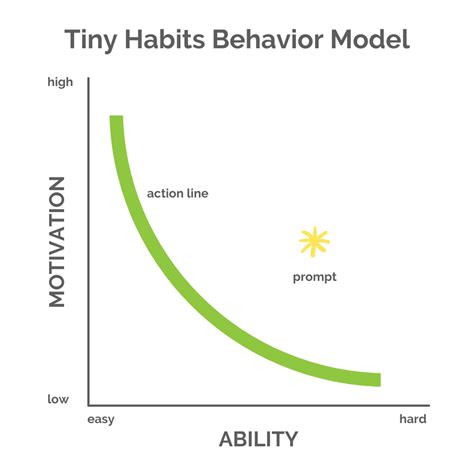
After years of declining popularity and numerous closures, buffet chain Golden Corral is attempting a resurgence, banking on pent-up consumer demand and strategic adaptations to a post-pandemic dining landscape.
Golden Corral, a brand synonymous with all-you-can-eat dining, is eyeing a comeback, seeking to revitalize its image and attract a new generation of customers after weathering significant challenges, including bankruptcies among its franchisees, stemming from changing consumer preferences and the COVID-19 pandemic. Lance Trenary, President and CEO of Golden Corral, acknowledges the difficulties, stating, “It’s been a tough several years,” but expresses optimism about the future, emphasizing the company’s efforts to innovate and adapt.
The chain, once a dominant force in the family dining segment, has faced headwinds in recent years. Changing consumer tastes, with a greater emphasis on health and customized dining experiences, have challenged the traditional buffet model. The pandemic exacerbated these issues, as health concerns led to temporary closures and a general aversion to self-service dining options. Several Golden Corral franchisees filed for bankruptcy protection during this period, contributing to a decline in the overall number of locations.
However, Golden Corral is not throwing in the towel. The company is actively pursuing several strategies to reignite growth and relevance. These initiatives include:
- Menu Innovation: Introducing new and exciting menu items that appeal to a wider range of palates. This includes incorporating healthier options, international flavors, and more customizable dishes.
- Enhanced Safety Measures: Implementing rigorous hygiene protocols to ensure a safe and comfortable dining environment. This includes enhanced cleaning procedures, sneeze guards, and options for server-assisted buffet service.
- Restaurant Remodels: Updating the look and feel of existing restaurants to create a more modern and appealing ambiance. This includes new décor, improved lighting, and more comfortable seating.
- Focus on Value: Emphasizing the affordability and value proposition of the buffet experience. This includes offering competitive pricing and promotions to attract budget-conscious diners.
- New Restaurant Concepts: Exploring alternative restaurant formats, such as smaller-footprint locations and express-style buffets, to cater to different markets and customer needs.
- Technological Enhancements: Leveraging technology to improve the customer experience. This includes online ordering, mobile payment options, and digital menu boards.
- Partnerships and Collaborations: Exploring partnerships with other brands and organizations to expand its reach and attract new customers.
The success of Golden Corral’s comeback will depend on its ability to effectively execute these strategies and adapt to the evolving demands of the dining public. The company faces stiff competition from other casual dining chains, as well as the growing popularity of fast-casual restaurants and meal delivery services.
One key aspect of Golden Corral’s strategy is to address consumer concerns about hygiene and safety. The company has implemented a number of measures to reassure diners, including increased sanitation protocols, enhanced sneeze guards, and the option for servers to assist with food selection. These measures are designed to create a more comfortable and worry-free dining experience.
Another important factor is the company’s focus on value. In an era of rising food prices, Golden Corral’s all-you-can-eat format offers a compelling value proposition for budget-conscious families and individuals. The company is also offering special promotions and discounts to attract customers and drive traffic.
Golden Corral is also exploring new restaurant concepts to cater to different markets and customer needs. This includes smaller-footprint locations that are easier to manage and operate, as well as express-style buffets that offer a more streamlined and convenient dining experience.
The company is also leveraging technology to improve the customer experience. This includes online ordering, mobile payment options, and digital menu boards. These technological enhancements are designed to make it easier and more convenient for customers to dine at Golden Corral.
Golden Corral’s comeback is not guaranteed, but the company is taking the necessary steps to revitalize its brand and attract a new generation of customers. By focusing on menu innovation, enhanced safety measures, restaurant remodels, value, new restaurant concepts, technological enhancements, and partnerships, Golden Corral is positioning itself for a potential resurgence in the years to come. The chain hopes that its commitment to providing a high-quality, affordable, and enjoyable dining experience will resonate with consumers and drive its long-term success. Whether it can successfully navigate the current competitive landscape and recapture its former glory remains to be seen. However, the company’s determination and strategic initiatives suggest that a Golden Corral comeback is a possibility.
The current economic climate, with inflation affecting grocery bills, could play to Golden Corral’s advantage as consumers seek value for their money. The ability to eat unlimited portions for a fixed price may become increasingly attractive. The success of this strategy hinges on Golden Corral maintaining food quality and a pleasant dining atmosphere.
The company’s marketing efforts will also be crucial in communicating its updated offerings and safety protocols to the public. A strong brand image and effective advertising campaigns will be essential in attracting new customers and regaining the trust of those who may have been hesitant to visit buffets in the past.
Ultimately, Golden Corral’s comeback will depend on its ability to adapt to the changing needs and preferences of its customers. The company must continue to innovate and evolve in order to remain relevant and competitive in the ever-changing restaurant industry. The road ahead may be challenging, but Golden Corral’s commitment to providing a great dining experience suggests that it has the potential to achieve a successful resurgence.
The chain’s resilience is being tested as it competes with fast-casual restaurants, customizable dining experiences, and health-conscious consumers. The ability to balance its core buffet concept with modern demands will define its future trajectory.
One of the biggest challenges for buffet restaurants like Golden Corral is the perception that they are unsanitary. The pandemic has heightened these concerns, and consumers are more aware than ever of the importance of hygiene and safety. Golden Corral has taken steps to address these concerns, but it remains to be seen whether these measures will be enough to reassure diners.
Another challenge is the changing demographics of the United States. The population is becoming more diverse, and consumers are increasingly interested in trying new and different cuisines. Golden Corral must adapt its menu to reflect these changing tastes if it wants to remain relevant.
Finally, Golden Corral faces stiff competition from other restaurant chains. The restaurant industry is highly competitive, and there are many different options available to consumers. Golden Corral must differentiate itself from its competitors if it wants to attract customers.
Despite these challenges, Golden Corral has a number of strengths that could help it to succeed. The chain has a strong brand name, a loyal customer base, and a proven business model. Golden Corral is also committed to innovation and is constantly looking for new ways to improve the customer experience.
Whether Golden Corral can successfully navigate these challenges and capitalize on its strengths remains to be seen. However, the company’s determination and strategic initiatives suggest that it has the potential to achieve a successful comeback. The restaurant industry is constantly evolving, and only those companies that are able to adapt and innovate will survive. Golden Corral is clearly committed to doing both, and this gives it a good chance of succeeding in the long term.
The story of Golden Corral’s attempted resurgence is a microcosm of the broader challenges and opportunities facing the restaurant industry as a whole. The pandemic has accelerated changes that were already underway, and restaurants must adapt to survive. These changes include a greater emphasis on hygiene and safety, a growing demand for convenience and customization, and increasing competition from new and innovative restaurant concepts.
Golden Corral’s efforts to address these challenges offer valuable lessons for other restaurants. The company’s focus on menu innovation, enhanced safety measures, restaurant remodels, value, new restaurant concepts, technological enhancements, and partnerships is a comprehensive approach that could be adopted by other restaurants looking to revitalize their businesses.
Ultimately, the success of Golden Corral’s comeback will depend on its ability to connect with customers and provide them with a great dining experience. The company must create an atmosphere that is welcoming, safe, and enjoyable, and it must offer food that is delicious, affordable, and satisfying. If Golden Corral can achieve these goals, it has a good chance of reclaiming its place as a leader in the family dining segment.
The buffet model, once a staple of American dining, has been significantly impacted by changing consumer preferences and health concerns. Golden Corral’s attempt to revitalize its brand is a test case for the viability of the buffet concept in the modern era. Its success or failure could have implications for other buffet chains and the future of all-you-can-eat dining.
The company’s management team is acutely aware of the challenges ahead. “We understand that the dining landscape has changed,” said Trenary. “We are committed to evolving our business model to meet the needs of today’s consumers.”
Golden Corral’s resurgence is not just about survival; it’s about adapting and innovating to meet the demands of a new era in dining. The company’s ability to strike a balance between its core values and the changing preferences of its customers will determine its ultimate success. The nation is watching to see if this iconic buffet chain can rise again, offering a taste of nostalgia with a modern twist.
The pandemic has fundamentally altered the way people view dining out. Concerns about hygiene, social distancing, and the overall safety of public spaces have become paramount. Golden Corral’s response to these concerns will be critical in attracting customers back to its restaurants.
The company’s efforts to enhance sanitation protocols, implement sneeze guards, and offer server-assisted buffet service are all steps in the right direction. However, it must also effectively communicate these measures to the public to reassure potential diners that its restaurants are safe and clean.
Transparency and communication will be key in building trust with consumers. Golden Corral must be open and honest about its safety practices and be willing to address any concerns that customers may have.
In addition to safety, Golden Corral must also focus on providing a high-quality dining experience. The company must ensure that its food is fresh, flavorful, and well-prepared. It must also provide excellent customer service and create a welcoming and enjoyable atmosphere.
The combination of enhanced safety measures and a high-quality dining experience will be essential in attracting customers back to Golden Corral’s restaurants. The company must convince people that it is worth the risk to dine out again, and that Golden Corral is the best choice for a safe, affordable, and enjoyable meal.
The company’s marketing efforts will play a crucial role in this effort. Golden Corral must develop a compelling message that highlights its strengths and addresses the concerns of potential customers. The company must also use a variety of marketing channels to reach its target audience, including television, radio, print, and social media.
A well-executed marketing campaign can help Golden Corral to regain its lost market share and attract new customers. The company must be creative and innovative in its marketing efforts to stand out from the competition and capture the attention of consumers.
Golden Corral’s comeback is not a sure thing, but the company has a number of factors working in its favor. It has a strong brand name, a loyal customer base, and a proven business model. It is also committed to innovation and is constantly looking for new ways to improve the customer experience.
With hard work, dedication, and a little bit of luck, Golden Corral can achieve a successful resurgence and reclaim its place as a leader in the family dining segment. The company’s story is an inspiration to other restaurants and businesses that are facing challenges in the current economic environment. It shows that it is possible to overcome adversity and achieve success with the right attitude and a commitment to excellence.
Frequently Asked Questions (FAQ)
-
What challenges did Golden Corral face that led to its decline?
Golden Corral faced a combination of factors, including changing consumer preferences leaning towards healthier and more customized options, the impact of the COVID-19 pandemic which brought temporary closures and aversion to self-service dining, and subsequent financial difficulties leading to bankruptcies among its franchisees. As Trenary mentioned, “It’s been a tough several years.”
-
What are the key strategies Golden Corral is implementing to attempt a comeback?
Golden Corral is implementing several strategies, including menu innovation with healthier and international options, enhanced safety measures such as increased sanitation, restaurant remodels for a modern ambiance, focusing on affordability, exploring new restaurant concepts like smaller-footprint locations, leveraging technology for online ordering, and forming partnerships to expand its reach.
-
How is Golden Corral addressing concerns about hygiene and safety in the post-pandemic era?
To address hygiene concerns, Golden Corral has implemented rigorous sanitation protocols, enhanced sneeze guards, and offers server-assisted buffet service. These measures aim to reassure diners and provide a safer and more comfortable dining experience.
-
What is Golden Corral’s strategy to compete with the rising popularity of fast-casual restaurants and meal delivery services?
Golden Corral is emphasizing its value proposition, highlighting the affordability of its all-you-can-eat format, offering competitive pricing and promotions, and exploring new restaurant formats like express-style buffets to cater to different customer needs and markets. The company is also leveraging technology to enhance customer experience and convenience.
-
How will the current economic climate impact Golden Corral’s comeback efforts?
The current economic climate, characterized by inflation and rising food prices, could favor Golden Corral as consumers seek value for their money. The all-you-can-eat format offers a compelling proposition for budget-conscious individuals and families, but the chain’s success will depend on maintaining food quality and a positive dining environment.
![Nostalgia is Served: [Restaurant Name] Returns After 30 Years!](https://kilaupesona.com/wp-content/uploads/2025/06/unnamed-file-281-150x150.jpg)








